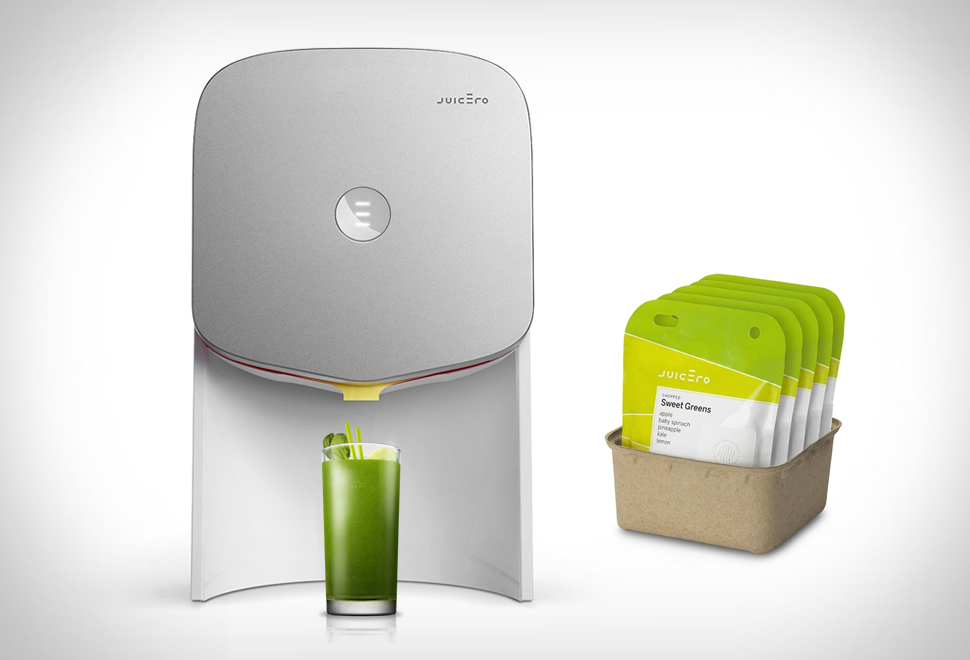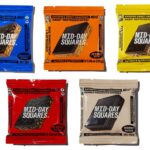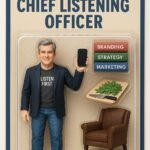From Edsel to Google Glass to LIFEWTR. Product Strategy Fails When It isn’t In Alignment with The Business
Building a product strategy can be challenging, but it is an essential muscle for any organization that wants to flex its strength and create and launch successful products. A product strategy outlines a product’s goals, target market, and positioning and helps guide product development.
However, many product strategies fail to deliver the desired results. There are several reasons why this happens. One of the most common reasons is that the product strategy is not aligned with the overall business strategy.
For example, a company may launch a new product that is not in line with its core competencies, or it may not have the resources to support its success. Another critical reason why product strategies fail is that they are not grounded in customer research.
Which toothless dope at Colgate thought they had licensed to enter the frozen food category?
Companies may develop products based on their assumptions about what customers want rather than conducting research to validate these assumptions. This can lead to products that do not meet the needs or desires of the target market. Or, some products are too far ahead of their time and get ahead of the market. While the fast followers often are the big winners – like the iPhone.
Remember the most successful product of all time; the iPhone wasn’t the first smartphone. As the market developed, Jobs recognized the power of elegant design, a touch screen and the elimination of buttons could make the product soar. He was right.
From Edsel to Juicero
One of the most notable product failures of all time is the launch of the Ford Edsel. The Ford Edsel was a car model launched by Ford Motor Company in 1958, intending to appeal to the growing luxury car market. Edsel was the son of Henry Ford.

However, the car was met with poor sales and negative reviews, and it was eventually discontinued in 1960.
The failure of Edsel has been attributed to various factors, including poor design, poor marketing, and a lack of understanding of consumer needs. The Edsel is often cited as one of history’s most extensive product failures. It resulted in significant financial losses for Ford and is considered a cautionary tale for companies launching new products.
Recent examples of product strategy failures include the launch of Google Glass in 2013 and the loss of the Juicero press in 2017. Google Glass was a wearable technology device that allowed users to access information and interact with their devices hands-free. However, the product faced privacy and safety concerns, ultimately failing to gain mass adoption.

The Juicero press was a high-tech juice press that used proprietary packets of pre-chopped fruits and vegetables to make juice. The company raised $120 million in funding and was valued at $400 million, but the product failed to gain consumer traction. The press was also found unnecessary, as the packets could be squeezed by hand with the same results.
One of the most notable product failures of the last 20 years is the launch of Google Glass.
Google Glass was an augmented reality head-mounted display device developed by Google and released in 2013. The device was intended to be worn like a pair of eyeglasses and to provide a user with a hands-free, voice-controlled computing experience. However, it was met with negative reviews and privacy concerns and was criticized for its high price point.
After a short period, the product was discontinued in 2015, and Google decided to pause the product and focus on enterprise solutions. Google Glass is often cited as one of the most extensive product failures in recent years. It had great potential but failed to meet the consumer’s expectations and raised concerns about privacy and safety.
My take on Google Glass is it over-promised and severely under-delivered. That’s a recipe for disaster.
To avoid these failures, organizations should ensure that their product strategy is aligned with their overall business strategy and is grounded in customer research. This can be achieved by conducting market research to understand the needs and wants of the target market and by involving customers in the product development process.
Companies should also focus on creating a unique value proposition for their products. This can be done by identifying a problem the product solves and highlighting the unique features and benefits that differentiate the product from competitors.
Six Examples of Recent Product Failures
- In 2018, Nestle launched a new line of Lean Cuisine frozen meals called “Satisfying Servings” that targeted health-conscious consumers. The meals were marketed as having more significant portions and more protein than traditional Lean Cuisine meals. However, the meals failed to catch on with consumers, as they were too similar to the existing Lean Cuisine line and didn’t offer enough of a unique value proposition. Nestle had to discontinue the line and write off $170 million in unsold inventory.
- In 2019, PepsiCo launched a new line of premium water called “LIFEWTR” targeted at health-conscious consumers. The water was marketed as having a high pH level and being infused with electrolytes. However, the product failed to differentiate itself from other premium water brands and was criticized for its high price point. The product line was discontinued after a few months.
- In 2020, Campbell Soup Company launched a new line of organic soups called “Well Yes!” The soups were marketed with “simple, nourishing ingredients.” However, the soups failed to catch on with consumers, as they were not perceived as being healthier or more convenient than other organic soups on the Market. Campbell Soup Company had to discontinue the line and take a $6 million charge for unsold inventory.
- In 2016, Samsung launched the Galaxy Note 7, which was intended to be a flagship phone that would compete with Apple’s iPhone. However, the phone was plagued with issues related to its battery, which caused the phone to overheat and catch fire. Samsung was forced to recall the phone. It had to discontinue its production, which resulted in a loss of approximately $5 billion for the company.
- In 2019, WeWork, a co-working space provider, attempted to go public with an initial public offering (IPO). However, the company’s financials and governance practices were questioned, and the IPO was eventually withdrawn. WeWork’s valuation dropped from $47 billion to $8 billion in months, which resulted in the company’s CEO, Adam Neumann stepping down.
- In 2020, Snap Inc, the company behind the social media platform Snapchat, launched Spectacles 3, a new version of its camera-equipped sunglasses. Spectacles 3 was positioned as a high-end product with a price tag of $380. However, the product failed to catch on with consumers, and Snap Inc had to take a $39.9 million charge for unsold Spectacles inventory.
P&G cleaned house and eliminated 105 of its lesser brands to focus on the 65 most profitable 22 brands, each with more than $1 billion in annual sales. Through focus, they could do a better job of bringing new products to market in segments that had high potential and probability of success.
Go To Market, Measurement Plans, and Alignment
Another critical aspect of building a product strategy is to have a clear go-to-market plan. This includes identifying the target market, determining the most effective channels to reach that Market, and developing a competitive pricing strategy that aligns with the product’s value proposition.
Finally, organizations should also have a plan for measuring the success of their product strategy. This includes setting clear goals, tracking key performance indicators, and using data to make informed decisions about the product’s future.
In conclusion, building a product strategy is essential to creating and launching successful products. However, many product strategies fail due to a lack of alignment with the overall business strategy, lack of customer research, and lack of a clear value proposition. And surprisingly, even big companies can’t do everything and must focus on resources.
By focusing on these critical areas and having a clear go-to-market plan and a plan for measuring success, organizations can increase the chances of success for their product strategy.
You can set up a time to chat with me about your marketing challenges using my calendar. Email me jeffslater@themarketingsage.com Call me. 919 720 0995. The conversation is free, and we can explore if working together makes sense. Watch a short video about working with me.
Photo courtesy of Colgate Archives
Edsel photo – (2023, January 17). In Wikipedia. https://en.wikipedia.org/wiki/Edsel





